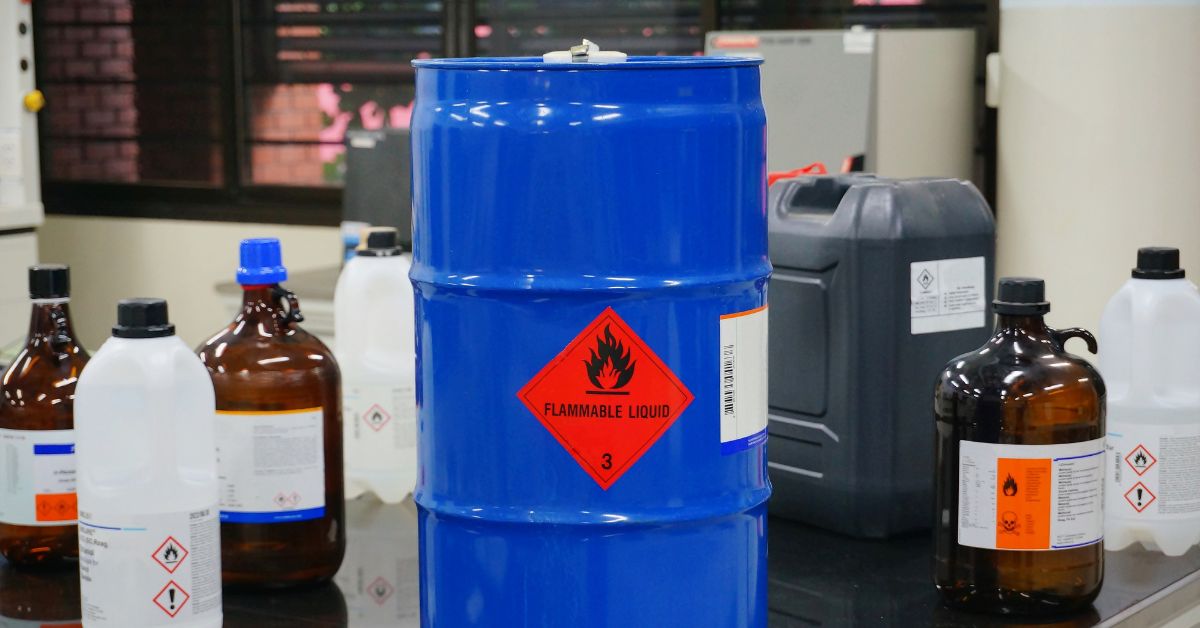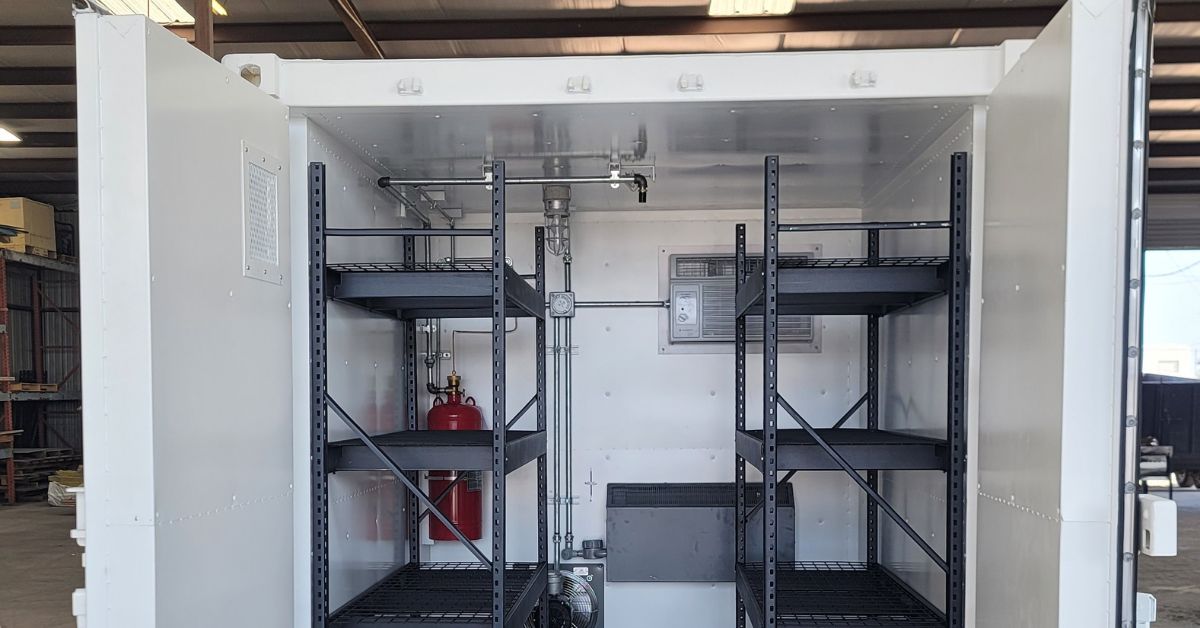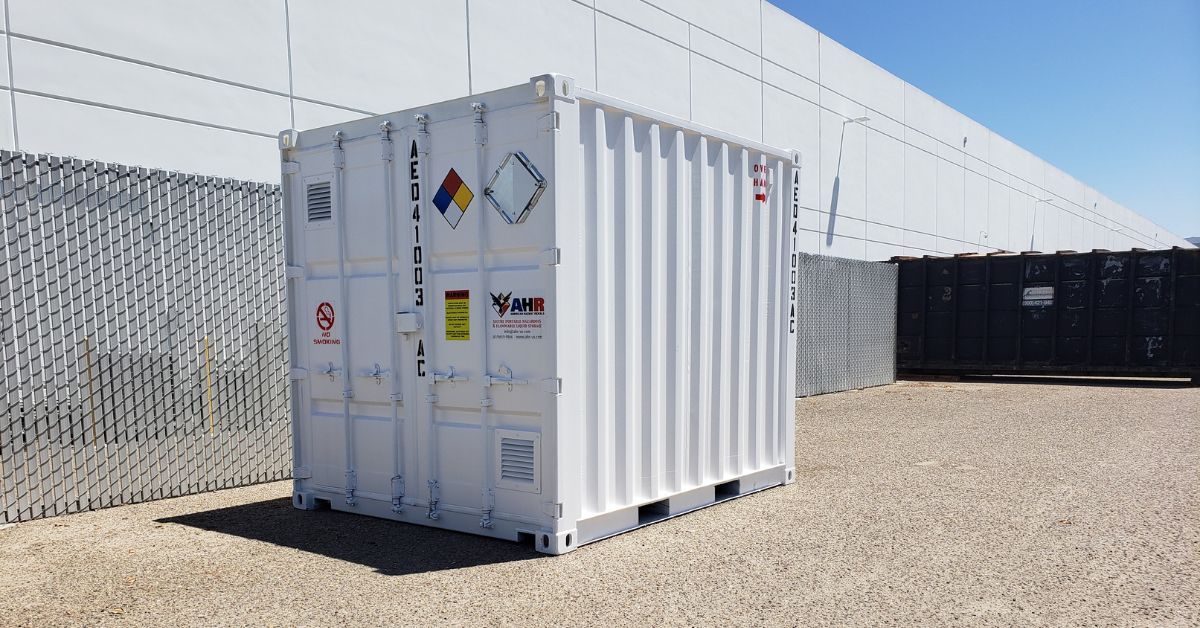
When it comes to handling hazardous materials, you can’t do things by half. Safety is key, and that requires careful handling, regular safety training, and the right storage equipment. But all that means nothing without proper container maintenance procedures in place. Regular upkeep enables the containers to function effectively and comply with federal and local hazmat laws and regulations.
In this article, we’ll explain the importance of regular hazmat container maintenance. We’ll cover why it must be done, what can happen if it isn’t, and how routine inspections and service can extend your containers’ usefulness.
Regular Maintenance
Hazmat containers are the first and often the best line of defense against exposure to hazardous materials and potential accidents. Hazmat containers are more than just boxes and barrels; they are designed to hold hazardous materials while standing up to internal and external pressure, damage, and corrosion.
These containers safely store substances that can poison the environment, cause explosions, ignite, corrode, or burn, or react with other materials. But the fact remains that they can only do so much to prevent accidents, and even the best-made containers break, leak, spill, or rupture if they’re ignored. Regular maintenance is required for hazmat containers to work properly and provide the following benefits:
Safety Assurance
Regular inspections enable you to address structural damage and find or prevent leaks. They also ensure fire-suppression systems and exhaust vents are fully operational in the storage facility, minimizing the risk of accidents.
Regulatory Compliance
Hazmat containers must meet strict legal and environmental regulations enforced by federal agencies, state law, and local codes. Periodic and thorough maintenance ensures your company remains compliant. This helps avoid penalties and fines, costly downtime, and, most importantly, accidents that may lead to injuries or deaths.
Prolonged Durability
Your containers are a big investment, so keep them in great shape. Frequent upkeep extends their lifespans, avoiding the need for replacements and saving money.
Taking care of minor issues now prevents problems in the future that compromise safety and daily operations. Neglecting maintenance, on the other hand, can lead to dire consequences.

The Dangers of Neglecting Hazmat Container Maintenance
Left unchecked, the risks of hazardous material container failure increase, affecting both employees and the business. Here are the dangers of neglecting regular maintenance:
Environmental Hazards
Hazardous material leaks are devastating to ecosystems. A compromised container may contaminate soil, water, and other resources required for the growth and development of life. What’s more, cleaning and repairing the resulting damage is far costlier than regular upkeep in terms of money and brand reputation.
Human Safety Risks
Neglected containers may develop structural weaknesses, increasing the likelihood of leaks, spills, explosions, and other accidents. Employees who work near these containers and in hazmat storage areas will be the first ones to suffer the effects. At best, it may lead to higher insurance premiums; at worst, it can cause injuries and deaths.
Noncompliance Penalties
Even if you don’t have an accident, you can still face escalating financial issues. Government agencies like OSHA inspect facilities that store hazardous materials and impose heavy fines on noncompliant ones. Such violations may also require a facility to shut down and cease operations until they make the upgrades and repairs required to achieve full compliance.
In short, maintenance prevents headaches and tragedies down the line.
How Regular Maintenance Optimizes Operations
Routine maintenance isn’t just about doing the bare minimum to achieve compliance. It just makes good business sense as well. Regularly scheduled maintenance contributes to greater efficiency and lower operating costs. Here’s how it benefits a facility’s ability to get the job done:
Prevention Is Better Than Reaction
Accidents can happen with hazardous material storage, but frequent inspections will reveal problems you can easily resolve. Small cracks, leaks, damage to flooring and shelving, or worn-out safety equipment are signs of potential equipment failure. Expedite repairs and replacements while they’re small and manageable to prevent spills.

Greater Longevity
Eventually, everything gets old and falls apart. But maintaining your hazmat containers helps them survive for years. Ensuring structural integrity, segregating reactive materials, and improving efficiency in spill containment systems are steps that prolong the lifespans of containers. Taking proper care of units is more cost-effective than routinely replacing them.
Increased Reputation
Reputation is everything in business, so don’t downplay the importance of being known as a safe and secure facility amongst stockholders, employees, regulatory agencies, and the local community. Regular maintenance and prioritizing hazard mitigation and prevention establishes your reputation as a safe place to work that takes hazmat safety seriously. Regular maintenance is always a good look for your brand’s identity and, therefore, your bottom line.
Practical Tips for Hazmat Container Maintenance
Implementing a maintenance routine for the first time? Here are a few tips for keeping your containers in optimal shape:
Regular Inspections
This cannot be stressed enough: schedule regular inspections every few weeks. Focus on the current state of containment systems, including the structural integrity of walls, doors, and seams. In addition, determine whether safety equipment, personal protective gear, and tools are ready to go in case of emergency. During your inspections, look for three of the biggest enemies of hazmat safety: rust, corrosion, and physical damage.
System Testing
Have a technician inspect and test safety systems, such as alarms, gas monitors, static grounding systems, lighting, exhaust fans, and fire suppression units. They will ensure these systems are operational and prepared to activate in an emergency. Regular inspections ensure they’re up to code and will perform effectively when needed.
Cleaning and Spill Management
Does your facility have drainage and containment systems in place? Make sure they’re pumped out and cleaned up. Cleaning sumps and pumps regularly will prevent backup and overflow. Removable, nonskid floor grating should also be kept clean and free from materials that can compromise safety.
Regular hazmat container maintenance is important. Taking proactive measures reduces the likelihood of container-related issues escalating into full-blown crises.
Ready to upgrade or install hazmat containers you can trust? Call us for a consultation. We offer multiple hazmat containment options, including hazmat side-opening storage containers. Keep your employees and facility safe. Contact us today!